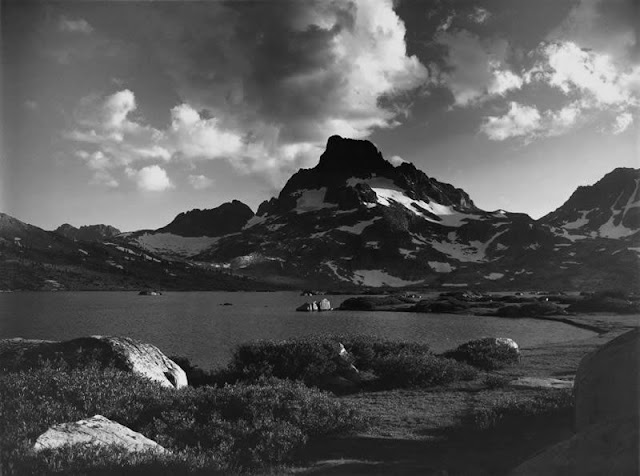Ansel Adams: A Different Kind Of Landscape
Landscape photography hasn't been as prominent on this blog as portraiture or photojournalism, so it's time to remedy that with a post that's worth a dozen other posts on the subject. With a requirement like that, it should be fitting to feature someone who has made the landscape photography field what it is today. The only way then would be to present the man who made mountains and valleys look like an altogether different kind of landscape with his black-and-white images, photographer Ansel Adams.
Ansel Adams has become a byword for good photography, whether you're discussing street photography, portraiture or landscape photography, not only because of his development of the Zone System which all good photographers know to some degree, but also because of his photographs which can be earnestly described as portraits of the Earth herself. His natural talent for getting the right shot in the frame at the right exposure might stem from his early exposure to the beauty of Yosemite National Park, a place which became a second home to him throughout his career.
His growing passion for the outdoors found a natural outlet with the Sierra Club, a group dedicated to wildlife conservancy. This passion for nature is obvious in Adams' images, but he would also later campaign actively for the preservation of America's natural wonders. In one case, his images helped convince Congress to create the King's Canyon National Park. This is just one instance of how influential Adams' photographs had become, even during his lifetime.
The now recognizable Adams style came about during one of his hiking expeditions in Yosemite. With only one plate remaining, he used a red filter on his lens to capture the side of the opposite mountain (for anyone not familiar with lens filters, these are pieces of glass attached to the front of the camera lens which change how colors are perceived through the glass; in this case, the red filter gives a darker, more contrasty look to the image).
The resulting photograph, "Monolith, the Half Face of Dome" shows the rock face in a broody, surrounded by the white shoulders of the mountain, all against the dark sky. This wasn't how the human eye would have seen it, but this is how Adams saw it in his mind and how he wanted the rest of the world to see it.
The next decades would see Adams refining his style. He met other photographers and artists of his time and made photographs in other styles, although it's his powerful images of nature that are synonymous with his name. He traveled all of the United States, from New Mexico to Montana and everywhere in between in order to capture and preserve the splendor and magnificence of pristine Mother Earth.
Adams' legacy lives on in his numerous photographs, many of which have become collector's items over the years. One such photograph entitled "Moonrise, Hernandez, New Mexico" (the very last image below) was a popular print during Adams' lifetime. One original print fetched a price of $609,600 during an October 2006 at Sotheby's auction. Although it didn't break the million-dollar mark, the auction still makes it one of the most expensive photographs ever sold.
Of course, monetary value aside, Adams' influence continues to extend towards the present day with his images being referenced as the epitome of landscape photography; his images are simple in their framing yet majestic in their content. His contributions to defending and immortalizing the US National Parks were recognized with a section of California land near Yosemite National Park being renamed the Ansel Adams Wilderness, one of many honors given to him for his invaluable images and support for the environment.
Ansel Adams' official website is here. As you can imagine, there are dozens of books on his photography, but Ansel Adams: 400 Photographs is a good place to start. Ansel Adams in the National Parks: Photographs from America's Wild Places is a good place if you're looking for his more famous works. For a different kind of Adams' landscape photography, go with Ansel Adams in Color.


















0 nhận xét:
Đăng nhận xét